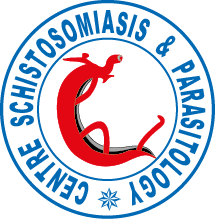Isoenzyme analysis of Schistosoma haematobium, S. intercalatum and their hybrids and occurrences of natural hybridization in Cameroon
Abstract
Isoelectric focusing of glucose-6-phosphate dehydrogenase (G6PD) produced clearly identifiable profiles for S. haematobium and S. intercalatum and their hybrids. To provide a more detailed analysis of the interactions of S. haematobium and S. intercalatum in South West Cameroon over the last 12 years, G6PD analyses were carried out on individual schistosomes collected in Kumba in 1990, Loum in 1990, 1999 and 2000 and Barombi Mbo and Barombi Kotto in 1999. Studies were also carried out on the two parental species S. haematobium Barombi Mbo, S. intercalatum Edea and subsequent generations of hybrids resulting from laboratory crosses of the two parental species. The isoenzyme analysis demonstrated that the 1990 isolate from Kumba, was a recombinant of S. intercalatumxS. haematobium, and that 30% of individual schistosomes collected in 1990 in Loum were also recombinants. The remainder gave data indicative of S. haematobium. In 1999, 12.5% of individuals from Loum showed recombination and 10% in 2000. Results from the most recent parasitological survey in October 2000 showed the persistence of the recombinant population in addition to that of S. haematobium. There was also evidence of recombination having taken place in Barombi Kotto but not Barombi Mbo. This study demonstrates how the situation has changed over the last 12 years, and emphasizes the importance of assessing morphological, biological and molecular data together to gain a true picture of the rapidly evolving situation.
